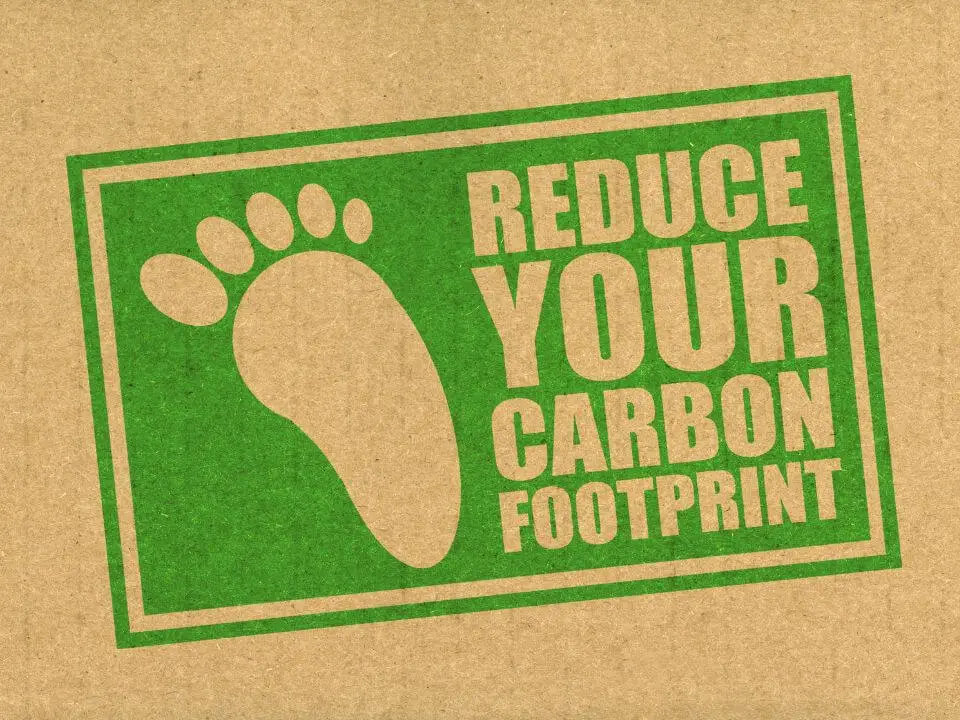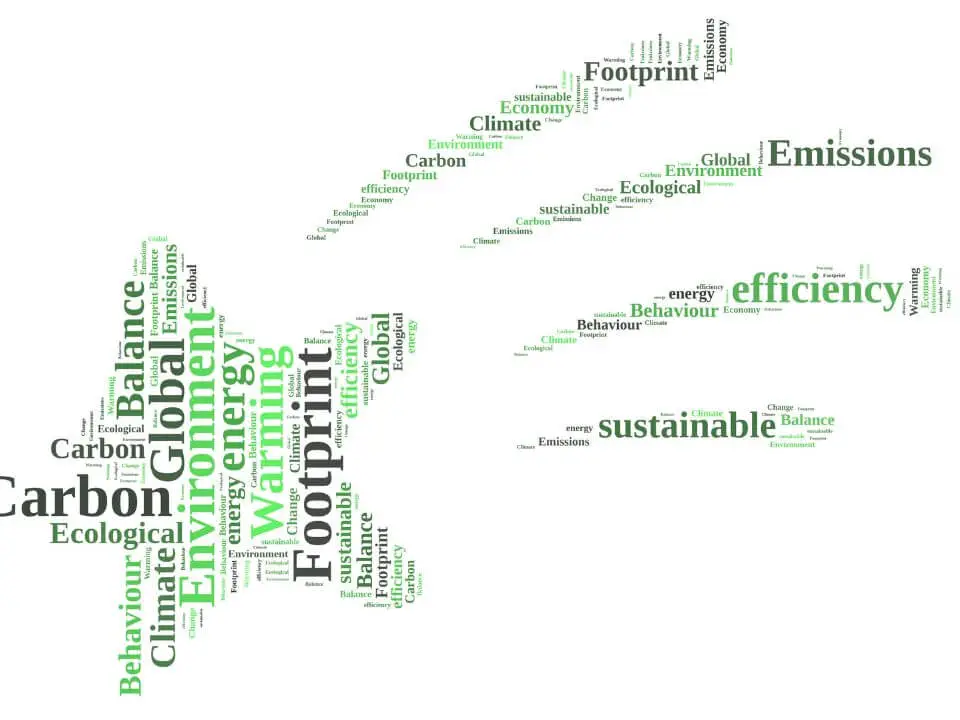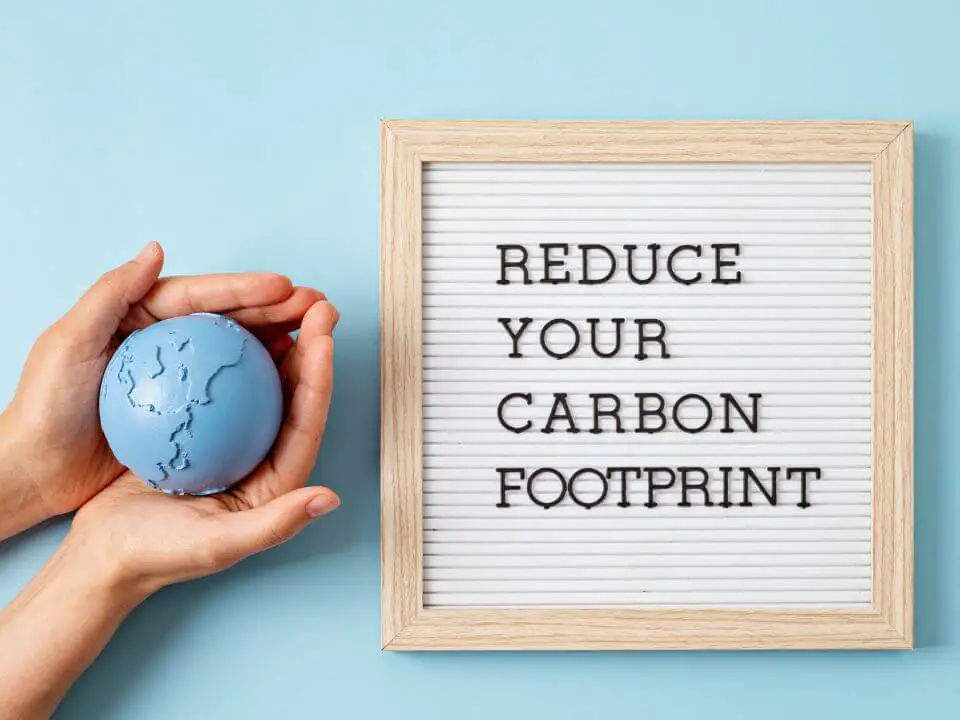A carbon footprint is the total amount of greenhouse gases emitted by an individual, event, organization, or product over a given period of time. Greenhouse gases include carbon dioxide (CO2), methane (CH4), nitrous oxide (N2O), and fluorinated gases such as hydrofluorocarbons (HFCs) and perfluorocarbons (PFCs). The main component of a carbon footprint is the emission of CO2, which contributes to climate change.

The size of an individual’s carbon footprint depends on many factors, including their lifestyle choices and the technologies they use. For example, people who drive gasoline-powered cars have larger footprints than those who drive electric cars. Similarly, people who live in houses heated by natural gas have larger footprints than those whose homes are powered by solar panels. The manufacturing process for some products also results in large emissions of greenhouse gases; for example, the production of steel emits large amounts of CO2.
How I Can Reduce My Carbon Footprint
As an individual, there are a number of things you can do to reduce your carbon footprint.
You can start by reducing the amount of energy you use in your home by making simple changes like:
- turning off lights when you leave a room
- choose energy-efficient appliances and light bulbs
- and setting thermostats at an efficient temperature
- Save energy and money by investing in weatherization improvements for your home such as insulation and sealing air leaks.
- recycle or compost instead of sending waste to landfills where it decomposes and emits methane gas into the atmosphere.

When it comes to transportation, you can help reduce emissions by carpooling, biking or walking whenever possible. If you must drive, make sure your vehicle is well-maintained so it runs efficiently. And consider trading in your gas guzzler for a more fuel-efficient model when it’s time for a new car.
Individuals can also make changes in their transportation habits to help lower their personal carbon footprints. Taking public transportation, carpooling, or riding a bike more often can all be helpful measures.
You can also help offset emissions from driving and flying by supporting projects that generate renewable energy such as wind or solar power. One way to do this is through green power programs offered by many utilities companies nationwide which allow customers to purchase blocks of renewable electricity generated from these sources.

Climate change is one of the most pressing issues of our time, and it’s important that we all do our part to reduce our carbon footprint. These small changes can add up to big reductions in emissions over time!
How Is A Carbon Footprint Measured
There are a number of ways to measure an individual’s or organization’s carbon footprint. The most common method is to calculate the emissions from all sources – including transportation, electricity use, heating and cooling, manufacturing and agriculture – and then convert those emissions into CO2 equivalents using emission factors from the Intergovernmental Panel on Climate Change (IPCC).
Once you have your total emissions in CO2 equivalents, you can then divide that number by your annual income or budget to get your carbon footprint per dollar spent. This will give you a good idea of how much each activity contributes to your overall impact on the environment.

Facts On Carbon Footprint
- A carbon footprint is the total amount of greenhouse gas emissions that come from the production, use and disposal of a product or service.
- The average American’s carbon footprint is about 20 metric tons per year.
- One way to reduce your carbon footprint is to choose products with a smaller ecological footprint.
- The ecological footprints of different products can vary greatly. For example, the production of 1 kilogram (2.2 pounds) of beef results in 23 kilograms (50 pounds) of greenhouse gas emissions, while 1 kilogram (2.2 pounds)of tofu only emits 4 kilograms (9 pounds). Therefore, eating less meat and more tofu can help reduce your carbon footprint significantly.

- In addition to choosing low-carbon foods, you can also take steps to reduce your food waste. According to the EPA, food waste accounts for about 21% of all solid waste in landfills . This means that when we throw away food, we are also throwing away all the resources and energy that went into producing it – including water , land , labor , fossil fuels , etc . Reducing food waste is therefore an important part in reducing our overall impact on the planet.
- Products with a smaller ecological footprints are available to help consumers lower their own personal carbon footprints through conscientious selection.. Selecting these items helps not only lower individual impact but also has a positive effect on climate change globally.. Greenhouse gases emitted from raising livestock for human consumption are one significant factor driving climate change according to research done by World watch Institute.


